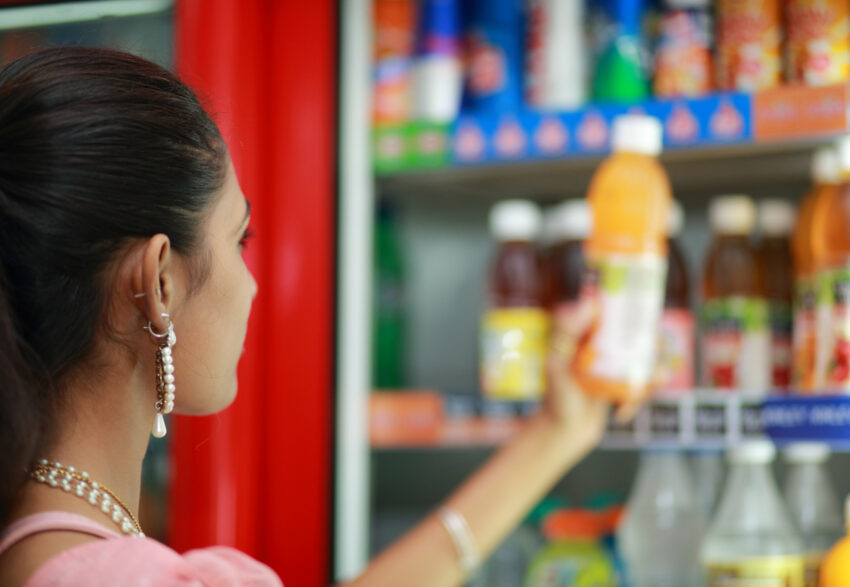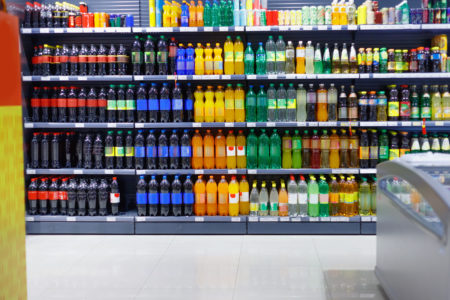
Share On Social!
Two years ago, Seattle city leaders passed a 1.75-cent-per-ounce tax on sugary drinks, aiming to reduce consumption of these unhealthy products that contribute to obesity.
The tax accomplished its goal – and then some – experts say.
Sales of soda, juice, and other sugary drinks dropped by 22% since the soda tax, according to a new study led by Dr. Lisa Powell of the University of Illinois at Chicago.
A second study from Powell also found that total sales of added-sugar foods and drinks fell almost 20%, driven largely by the decline in sugary drink purchases.
“Our studies show that even after accounting for potential substitution behaviors, like cross-border shopping or selection of other items with added sugars, these taxes have a large, sustained impact on reducing volume and grams of sugar sold from sugary beverages,” Powell said.
The Seattle Soda Tax and its Impact
Powell and her colleagues studied product-code scanner data on taxed and untaxed drinks and other added-sugar products one year before the tax and two years after the tax.
Their first study found, after the tax, that:
- Prices of taxed drinks increased by 1.04 cents per ounce (59% tax pass-through rate)
- The volume sold of taxed drinks fell by 22%
- No change occurred in volume sold of taxed drinks in Seattle’s 2-mile border area, suggesting no cross-border shopping.

- Declines in sugary drink purchases were larger for family-size (29%) than individual-size (10%) beverages. This was particularly true for soda, which saw a 36% decrease for family-size compared to no change for individual-size.
Their second study found a 23% decrease in grams of sugar sold from taxed drinks. This was offset by a 4% increase in sugar sold from untaxed drinks, and a 4% increase in sugar sold from sweets.
“After accounting for substitutions, there was a net reduction of 19 percent in grams of sugar sold from taxed beverages,” Powell told The Counter. “So there was some offset for sure, but there’s still at the end of the day, a substantial reduction in grams of sugar sold.”
The results may have promising public health implications, Powell said.
“[These studies suggest] that taxes may permanently reduce the demand for sugary beverages and help to lower rates of health harms that are associated with added sugars,” she said.
Sugary Drinks and the Impact on Latino Children
One of the biggest issues when it comes to sugary dinks is its impacts on children.
Overconsumption of sugary drinks is a big problem for children, especially Latino and Black youth. Unfortunately, these populations also struggle with health issues like obesity.
“Latino kids who consumed sugary drinks had 2.3x the odds of severe obesity. Latino toddlers ages 2-4 who didn’t consume sugary drinks had 31% lower odds of obesity than those with a high intake,” according to a Salud America! research review.
Latino and Black kids are also more likely to be targeted by marketing from the beverage industry.
“On Spanish-language TV, four companies – PepsiCo, Coca-Cola, Dr Pepper Snapple Group, and Innovation Ventures – were responsible for 98% of sugary drink and energy drink ad spending,” according to a report from Rudd Center for Food Policy & Obesity.
How Can Leaders Help Reduce Sugary Drink Consumption?
We can help fight the negative consequences of overconsumption of sugary drinks.
Here are 5 pediatrician-approved recommendations:
- Raise the price of sugary drinks.
- Reduce sugary drink marketing to children and teens.
- Remove sugary drinks from kid’s menus. Emphasize healthy drink options.
- Add accurate nutrition labels and information.
- Hospitals should serve as models with policies to limit or discourage purchase of sugary drinks.
 Many U.S. cities are enacting sugary drink taxes. With the tax revenue, cities can funnel money toward local health programs.
Many U.S. cities are enacting sugary drink taxes. With the tax revenue, cities can funnel money toward local health programs.
Here are some examples:
- Berkeley, Calif. (11.4% Latino): This city implemented the first U.S. sugary drinks tax. The Praxis Project’s video series shows how tax revenue is making people healthier, from schools to families to the arts.
- San Francisco (15.2% Latino): Revenue from the 1 cent-per-ounce tax funds preventive health services in low-income communities. It also funds programs to improve school nutrition and oral health.
- Seattle (18.3% Latino): Revenue from the 1.75 cent-per-ounce tax funds programs that help low-income people buy healthy food. It also helps subsidize schools and childcare centers to increase servings of fruits and vegetables.
- Philadelphia (15.2% Latino): A 1.5-cent-per-ounce Sweetened Beverage Tax took effect January 2017. The measure is working, health experts say. Revenue is going to early childcare programs. It also is improving local parks, though progress is slow.
- Other cities have passed such taxes, including Albany and Oakland, Calif., as well as Boulder, Colo. They are also funding public health prevention programs.
Also, California can no longer punish cities for enacting sugary drink taxes, as per an October 2021 court ruling that declared the penalty provision of the state’s Keep Groceries Affordable Act of 2018 unconstitutional.
And, as Seattle has found, sugary drink taxes are working.
“These results suggest that [sugary drink] taxes may effectively yield permanent reductions in added sugars sold from [sugary drink] taxes in food stores,” Powell wrote in one of the studies.
What Else Can You Do to Promote Healthier Drinks for Children?
By encouraging kids to drink more water than soda, we can protect Latino and Black youth health.
To this end, universities and marketers are helping get the word out about the health dangers of sugary drink among Latino families with a new toolkit.
The toolkit, called “The Truth About Fruit Drinks” contains an evidence-based social media messaging campaign for countering beverage industry marketing and decreasing the purchase of fruit drinks by Latinx parents for their children and promoting water as a healthier beverage choice.
You can also take action in your community.
Salud America! also created an Action Pack to help parents and school leaders push for Water Bottle Fountains. This refillable water station can boost access to water for Latino and all kids.
By The Numbers
1
Supermarket
for every Latino neighborhood, compared to 3 for every non-Latino neighborhood



